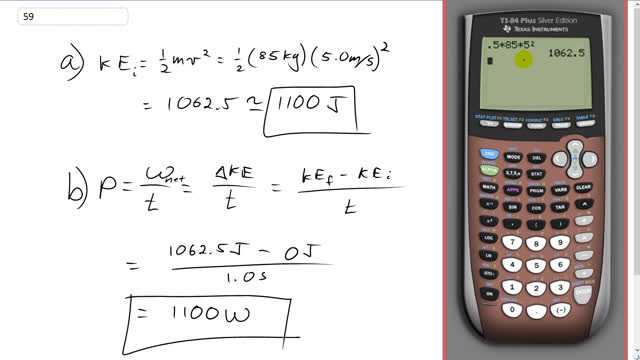
An 85-kg football player traveling 5.0 m/s is stopped in 1.0 s by a tackler.
- What is the original kinetic energy of the player?
- What average power is required to stop him?

In order to watch this solution you need to have a subscription.
This is Giancoli Answers with Mr. Dychko. The initial kinetic energy of this football player is one-half times his mass times his velocity squared. So that's one-half times 85 kilograms times 5 meters per second squared which is 1062.5, which rounds to 1100 joules when you have two significant figures as you should because the numbers we start with have two significant figures each. So, for part (b), the power is gonna be the change in energy divided by time where the work done divided by time. The net work on this football player is gonna be the change in kinetic energy coz net work equals change in kinetic energy and so we have final kinetic energy minus initial kinetic energy divided by the time it takes to make that change in kinetic energy. So we have 1062.5 joules minus 0 joules in the end; I guess I can, I'm not really paying very careful attention to minus signs because we are just being asked what the magnitude of the power is really. So I guess that should be positive and that negative but anyway, we'll just put a little absolute values around it and that makes our answer position, yay! So we have, this number of joules, initial kinetic energy, minus 0 joules, after the football player stops, divided by 1 second that it takes to stop him which is the same number, 1100, and now it's watts because we are dealing with power, joules per second.
Nice ! Thanks!